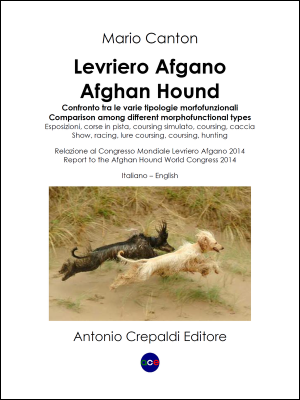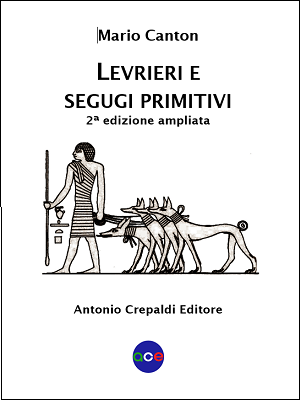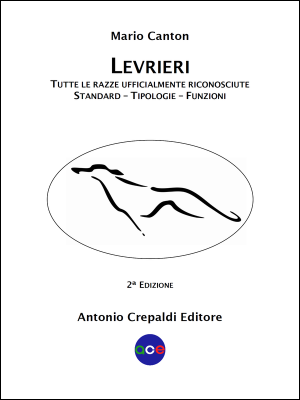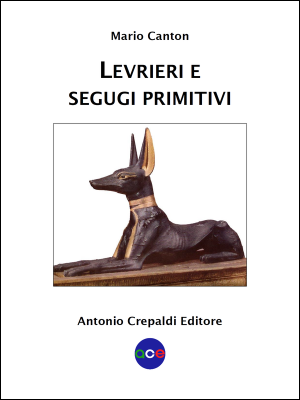Levriero Afgano – Afghan Hound
Confronto fra le varie tipologie morfofunzionali
Comparison among different morphofunctional types
Esposizioni, corse in pista, coursing simulato, coursing, caccia
Show, racing, lure coursing, coursing, hunting
Relazione al Congresso Mondiale Levriero Afgano 2014
Report to the Afghan Hound World Congress 2014
—
ISBN 978-88-96635-33-9
Breve sommario dei contenuti
- Tema
- Principio biologico
- Approccio estetico
- Selezionato per un preciso scopo
- Tendenze funzionali (correlate alla prestazione)
- Tendenze morfologiche (correlate alla forma)
- Differenze strutturali responsabili delle differenze nelle andature
- Trottatori e galoppatori
- Caratteristiche desiderabili nei cani trottatori
- Caratteristiche desiderabili nei cani galoppatori
- Tipologie di cani galoppatori
- Evoluzione per allevamento selettivo
- Corsa in salita
- Groppa ripida
- Cos’è l’agilità ?
- Effetti della taglia sull’agilità
- Differenze strutturali nei cani galoppatori
- Tipologie differenti di galoppatori veloci
- Costruzione dei cani veloci
- Muscolatura nei cani veloci
- Differenze strutturali: levriero contro trottatore
- L’Afgano da esposizione
- L’Afgano da esposizione – Caratteristiche
- L’Afgano da corsa in pista
- L’Afgano da corsa in pista – Caratteristiche
- L’Afgano da coursing simulato
- L’Afgano da coursing simulato – Caratteristiche
- L’Afgano da coursing
- L’Afgano da coursing – Caratteristiche
- L’Afgano da caccia
- L’Afgano da caccia – Caratteristiche
- Alcune caratteristiche da osservare per preservare la funzionalità
- Variazione della taglia e proporzioni
- Test dei dischi a pressione
- Osservazioni finali sul Levriero Afgano
- Il trotto volante in esposizione
- Approfondimenti
- Fine
- Bibliografia cinotecnica.
—
![]()
This publication presents the report by Mario Canton – in date 1st of May, 2014 – to the Afghan Hound World Congress in Padenghe sul Garda (Italy). Congress was organized by AIALA (Afghan Hound Italian Club) and entitled: “Afghan Hound… hunting machine or best in show machine ?”. The argument entrusted to the author is here published with the original slides in English language exposed to the public in conference room, with the Italian translation at the footer. Mario Canton has confronted the “globalized” bred type for shows not only with the Afghan Hounds bred for racing and lure coursing, but also with the Afghan Hounds most “naturals” utilized for coursing and hunting. The detailed presentation of different models of working gallopers is important for prove the clean contrast with the Afghan Hound seen in dog show with movement of flying trot.
Table of Contents
Title; Biological principle; Aesthetic approach; Bred for a purpose; Function trends (related to performance); Form trends (related to morphology); Structural differences responsible for gait differences; Trotters & Gallopers; Features desirable in trotting dogs; Features desirable in galloping dogs; Types of galloping dogs; Evolution by selective breeding; Running uphill; Steep pelvis; What is agility?; Effect of size on agility; Structural differences in galloping dogs; Types of speed gallopers; Structure of swift dogs; Muscles in swift dogs; Differences in structure – Sighthound vs. Trotter; The show Afghan Hound; The show Afghan Hound – Trends; The racing Afghan Hound; The racing Afghan Hound – Trends; The lure coursing Afghan Hound; The lure coursing Afghan Hound – Trends; The coursing Afghan Hound; The coursing Afghan Hound – Trends; The hunting Afghan Hound; The hunting Afghan Hound – Trends; Some features to be evaluated to preserve functionality; Change in size and proportions; Pressure plate test; Final observations about Afghan Hound; The flying trot in expo; Insights; The End; Books on functional morphology and conformation.




